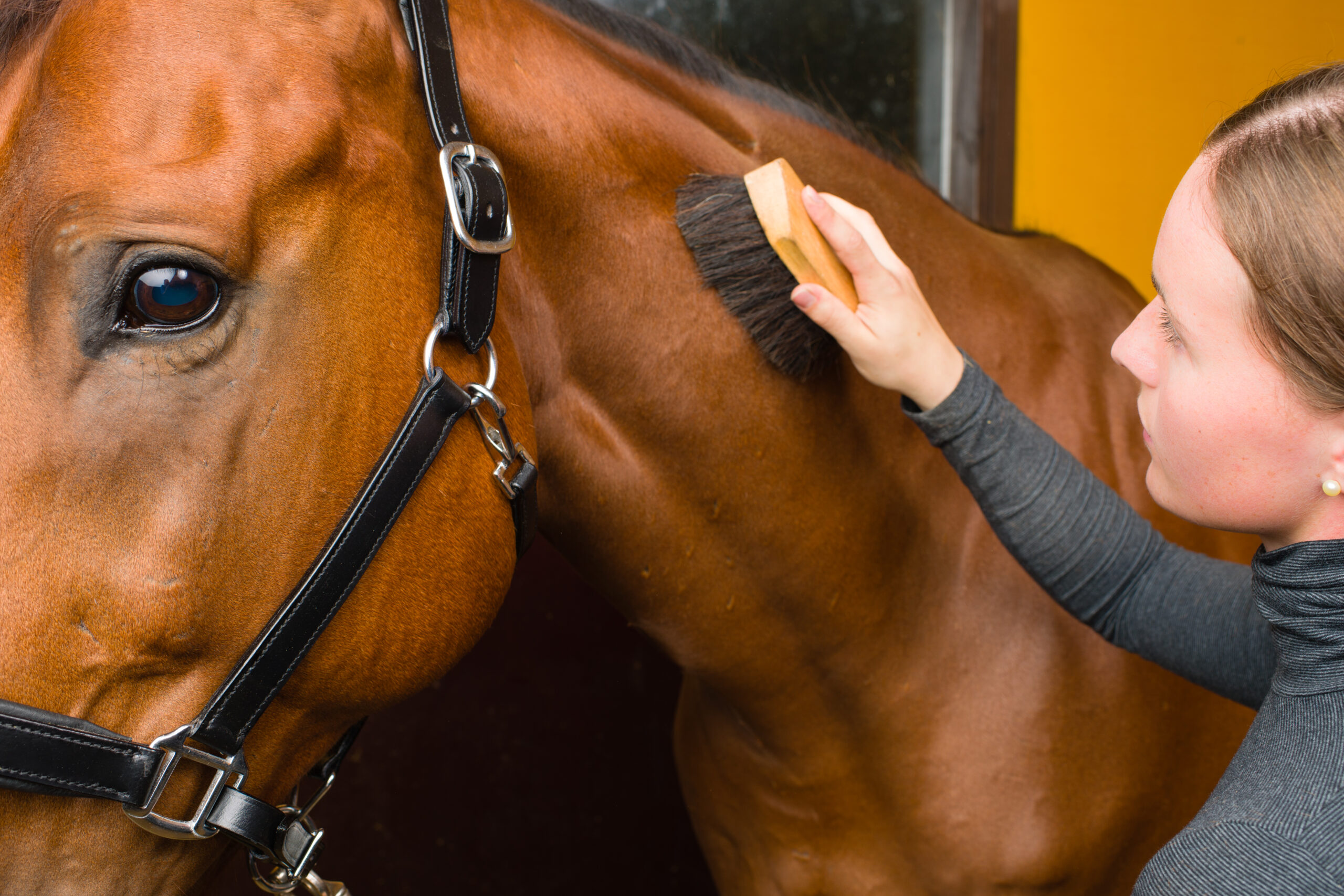
While some horse owners give their horses time off during wet or cold weather, others like to do what they can to build horsemanship skills and their relationship with their horse. Others still might try to keep their horses fit during the off season to prepare for competitions or other spring and summer riding activities.
Shelby Ketcham is an accomplished young trainer and the owner of SJR Horsemanship in Kuna, Idaho. Known regionally for her success in the mustang world, Ketcham strives to train true all-around horses using a variety of techniques, including liberty work.
Working With Your Horse at Liberty
“Liberty work is an opportunity to connect with a horse mentally and physically without the use of restraints,” explains Ketcham. No halters, ropes, leads, or other tools directly connect you to the animal. Working horses at liberty gives you the chance to show your horse you want to connect on a deeper level, and it also often allows your horse to work through complicated issues that might affect your regular training, such as hesitating to trust you. Ketcham suggests starting out by spending quality time being present with your horse. This could be as simple as hand grazing your horse quietly and noticing how he eats, breathes and moves while avoiding distractions such as your mobile phone or talking with others. To help begin with liberty training, check out the resources available at the International Liberty Horse Association.
Practicing Showmanship With Your Horse
For adults as well as youth, showmanship is an excellent skill to practice when the weather is not ideal for riding. Showmanship is not a halter class; it is judged on the exhibitor’s ability to show a horse in-hand quickly and efficiently while performing a pattern, says Jodi Croy, a trainer based in Renton, Washington, who has coached horses and their riders to many world titles in events such as Reining, Western Riding, Western Pleasure, Hunter Under Saddle, and Showmanship over the past 40 years,.
Showmanship is a great way to connect with your horse, teaching them ground manners, patience, and respect for each other’s space, says Croy.
Working With Trail Maneuvers and Obstacles
“Working with your horse in-hand is always beneficial,” says Matt Livengood, a Ranch Riding and Ranch Trail trainer in Nampa, Idaho. “(In-hand) is the building block for your relationship with your horse. Even simply walking, stopping, and backing your horse on the ground helps to develop a connection.” Livengood suggests walking at normal speed, then walking faster for 10 or 20 feet, then slowing down to a very slow walk, encouraging the horse to match your speed and energy. “Have your horse move just their hind end (keeping their front-end in one place), then just their front end (keeping their hind end in one place), in response to your cues,” he says. If you don’t have access to an indoor arena, this kind of groundwork can even be done in a smaller area, like a barn aisleway or a large shelter.
“If you do have a little space somewhere, set up a simple obstacle course with poles, cones (or a few blocks of wood), and a tarp or piece of plywood,” says Livengood. “Walk your horse over the tarp or plywood, then trot over the poles, then come back to a walk to serpentine through the cones or blocks.”
Take-Home Message
Mixing it up and trying some of these techniques, even for 15 or 20 minutes a day, is a great way to spend some time with your horse when the weather is too poor to ride. These techniques can also help you build a connection with your horse that will be valuable when you get back in the saddle.


